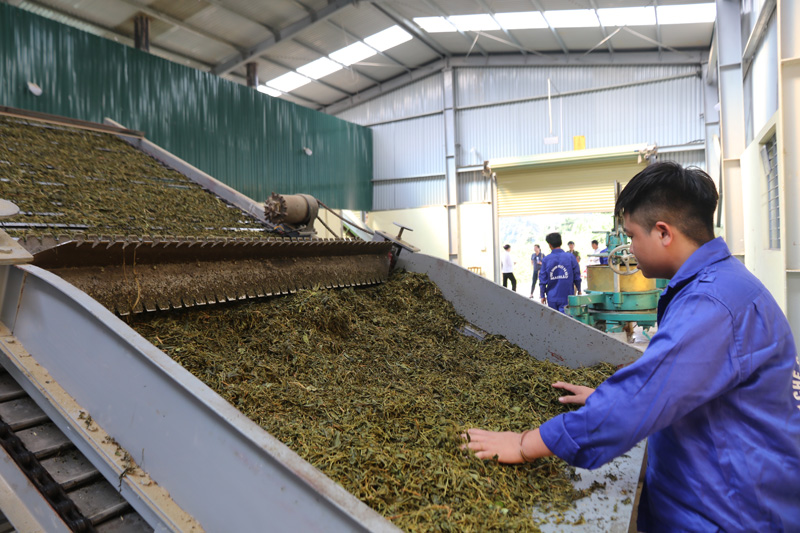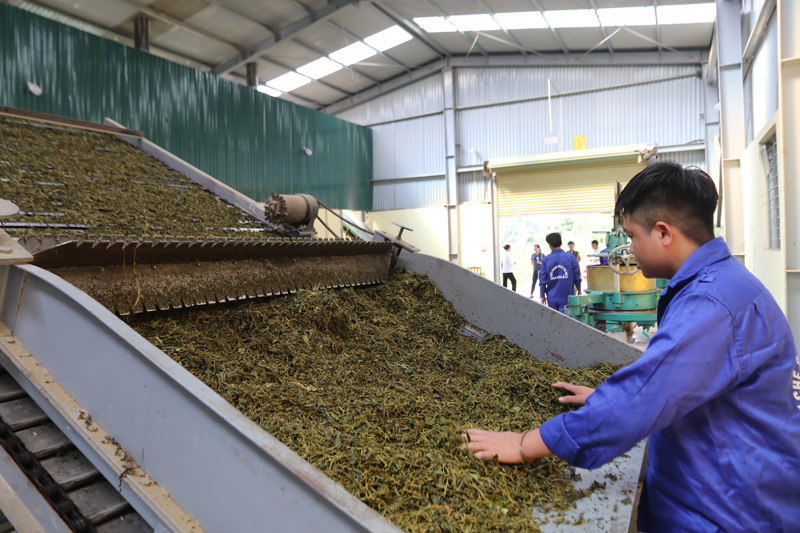


 A tea
processing plant in Pa Co commune (Mai Chau district) is built with support
from the provincial authorities, creating jobs for locals
A tea
processing plant in Pa Co commune (Mai Chau district) is built with support
from the provincial authorities, creating jobs for locals
By the end of 2019, they achieved six out of ten criteria for new-style rural area building.
The per capitaincome of Hang Kia commune was 15.1 million VND in 2019, up 11.1 million VND from 2012. The figures of Pa Co commune were 12.5 million VND, and 8.3 million VND, respectively. Improvements have also been seen in culture, healthcare, and education.
In 2019, Hang Kia and Pa Co recorded the poverty rate at 29.6 percent and 25.46 percent, respectively. They also met the criteria for new-style rural area building in terms of infrastructure.
Having maintained national defence-security and consolidated the grassroots-level political system, the two communes fulfilled security and social order criteria.
The People’s Committee of Hoa Binh provine has put forth a plan to continue implementing the new-style rural area building project until 2025. The province plans to mobilise 165 billion VND for the project.
Under the project, roads, electricity facilities, schools and healthcare system will be upgraded while support will be given to production, tourism and socio-culture aspects.
The province also aims to call for resources for community-based tourism, with focus on exploring local cultural identity and farming produce.
By 2025, Hang Kia and Pa Co communes target to reduce their poverty rate by 4-6 percent per year among their Mong ethnic minority groups. Their per capita income are hoped to reach 30 million VND. All local children have access to education and no children drop out of school.
The population growth rates of the two communes are expected to fall 1 percent. At least 80 percent of local households earn the "cultural family” status. To ensure sustainable development, they also aim to have at least two products under the "One Commune One Product” programme.
Publicity campaign will be promoted to raise awareness and sense of responsibility of the whole communal political system and residents in order to fully explore local potentials, thus ensuring comprehensive socio-economic development./.